 The holidays are a time for joy, connection, and celebration — but they can also bring stress with travel, packed schedules, and disrupted routines. It’s easy for fitness habits to take a back seat during this busy season, but staying active doesn’t have to be complicated or time-consuming. Even small bursts of movement can make a big difference, helping you sleep better, reduce stress, and boost your energy.
The holidays are a time for joy, connection, and celebration — but they can also bring stress with travel, packed schedules, and disrupted routines. It’s easy for fitness habits to take a back seat during this busy season, but staying active doesn’t have to be complicated or time-consuming. Even small bursts of movement can make a big difference, helping you sleep better, reduce stress, and boost your energy.
How Much Activity Do You Really Need?
According to the American College of Sports Medicine, adults should aim for at least 150 minutes of moderate-intensity aerobic exercise each week. During the holidays, this could look like taking a brisk walk after meals, doing a short bodyweight circuit, or following a quick 10-minute yoga or core workout. The key is to keep movement simple and enjoyable. Find activities you love — join a group fitness class, head outdoors for some friendly competition, or put on your favorite holiday playlist and dance around the house. Exercise doesn’t have to feel like a chore, especially when you make it social and fun.
Plan Ahead for Success
With so many commitments during the holidays, time can slip away fast. Try blocking out small windows of time in your day for movement and treat these moments like important appointments. Using a day planner or phone reminder can help you stay consistent and accountable. Even if you’re traveling or away from the gym, you can still get a great full-body workout. Pack light equipment like resistance bands or use what’s around you — stairs, furniture, or even luggage can double as fitness tools. Every bit of movement adds up.
Why Staying Active Matters
Regular exercise does more than maintain your fitness level — it also reduces your risk of chronic diseases such as heart disease, stroke, and diabetes, while improving mood and overall well-being. You don’t have to hit a specific number every single day; what matters most is consistency over time. Make movement part of your holiday traditions by encouraging family or friends to join you for a walk, dance break, or quick bodyweight challenge. Stay hydrated, aim for seven to eight hours of sleep each night, and celebrate small wins that keep you feeling your best.
The holidays are about celebration, so bring that same spirit into your workouts. Stay active by being social, trying new activities, and incorporating daily movement challenges. With the right mindset and a little creativity, maintaining your fitness routine can feel just as rewarding as the festivities themselves.

 Arthritis is not a sign that you are aging; rather, it is a testament to the vibrant life you have led and all the incredible things your body has accomplished for you! Just imagine the tales your joints could share. Now, it is time to embrace a new narrative for this season of your life, embracing those little creaks. By making simple adjustments to your exercise and wellness regime, you can stay active, strong, mobile, and happy. Here is what you can do to keep your joints healthy as you age.
Arthritis is not a sign that you are aging; rather, it is a testament to the vibrant life you have led and all the incredible things your body has accomplished for you! Just imagine the tales your joints could share. Now, it is time to embrace a new narrative for this season of your life, embracing those little creaks. By making simple adjustments to your exercise and wellness regime, you can stay active, strong, mobile, and happy. Here is what you can do to keep your joints healthy as you age. 
 Improving and maintaining your balance is central to help prevent falls and avoid injury. There are many ways to enhance your current level of balance, whether it be getting your daily steps in by walking, taking weekly chair or standing yoga classes, or by strengthening your stability muscles to help keep your body standing strong. Balance is much more than simply standing on one leg. Consider this 3-step approach to improve your balance potential.
Improving and maintaining your balance is central to help prevent falls and avoid injury. There are many ways to enhance your current level of balance, whether it be getting your daily steps in by walking, taking weekly chair or standing yoga classes, or by strengthening your stability muscles to help keep your body standing strong. Balance is much more than simply standing on one leg. Consider this 3-step approach to improve your balance potential. Regular exercise is incredibly beneficial for people with Parkinson’s disease (PD). It helps manage symptoms like stiffness, gait issues, posture, and balance deficiencies. Individual exercises can build into complex movement patterns, eventually evolving into activities such as dancing, yoga, and boxing. Since PD presents itself uniquely in each person, no two exercise programs will look the same. A personalized plan that takes into account both the individual’s daily needs and the activities they enjoy most will have the greatest impact on improving their quality of life.
Regular exercise is incredibly beneficial for people with Parkinson’s disease (PD). It helps manage symptoms like stiffness, gait issues, posture, and balance deficiencies. Individual exercises can build into complex movement patterns, eventually evolving into activities such as dancing, yoga, and boxing. Since PD presents itself uniquely in each person, no two exercise programs will look the same. A personalized plan that takes into account both the individual’s daily needs and the activities they enjoy most will have the greatest impact on improving their quality of life.
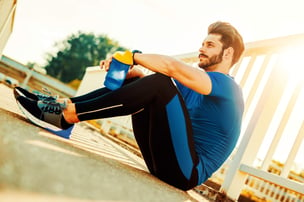 When it comes to athletic performance and recovery, one advancement in recent years has been compression clothing. From professional athletes to fitness enthusiasts, compression garments have become a staple in many wardrobes. But what exactly is the science behind compression clothing, and how does it impact our bodies during exercise and recovery? Let's dive in and explore the world of compression wear.
When it comes to athletic performance and recovery, one advancement in recent years has been compression clothing. From professional athletes to fitness enthusiasts, compression garments have become a staple in many wardrobes. But what exactly is the science behind compression clothing, and how does it impact our bodies during exercise and recovery? Let's dive in and explore the world of compression wear.
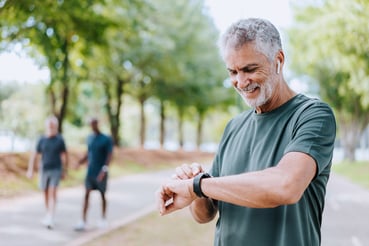 Improving your running time and efficiency can seem overwhelming. Whether you are a beginner or well-seasoned runner there is always room for performance improvement.
Improving your running time and efficiency can seem overwhelming. Whether you are a beginner or well-seasoned runner there is always room for performance improvement..jpg?width=477&height=318&name=GettyImages-1143018176%20(1).jpg) It isn’t a secret that as a person ages, there is an increased risk of falling. While there are a few different reasons this risk can increase, we will focus on what impacts a person’s ability to
It isn’t a secret that as a person ages, there is an increased risk of falling. While there are a few different reasons this risk can increase, we will focus on what impacts a person’s ability to 
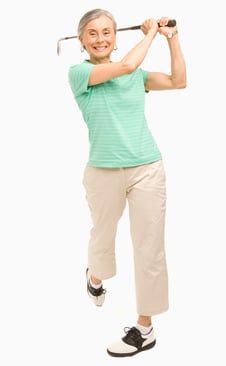 Most folks who have ever participated in balance training know that most exercises seem to involve only the legs. While it is important to focus on our lower extremities during our training, it is important to incorporate the use of our arms for more functional and effective training. Why? Because this will have more real-world applications! For example, practicing single leg stance is important for improving balance but most of us are not going to be in a situation where we must stand on one leg for an extended period of time. We will, however, be shifting our weight from one leg to another, swinging our arms like we do when walking, taking the stairs, dancing, or cleaning the house in real world daily activities.
Most folks who have ever participated in balance training know that most exercises seem to involve only the legs. While it is important to focus on our lower extremities during our training, it is important to incorporate the use of our arms for more functional and effective training. Why? Because this will have more real-world applications! For example, practicing single leg stance is important for improving balance but most of us are not going to be in a situation where we must stand on one leg for an extended period of time. We will, however, be shifting our weight from one leg to another, swinging our arms like we do when walking, taking the stairs, dancing, or cleaning the house in real world daily activities.
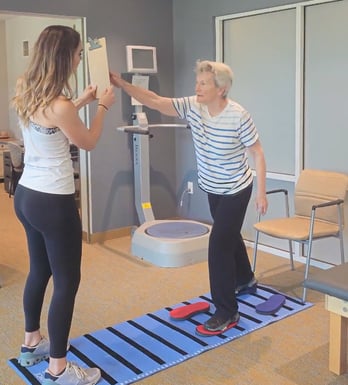 What is great about practicing balance is that there are multiple ways to do it including the utilization of various machines. Within senior living, evaluating equipment options can be a helpful starting point to developing a comprehensive fall prevention program for residents. In this two-part blog series, we’ll be covering investment pieces to incorporate in your fitness center’s fall prevention programming as well as more budget-friendly options if you are looking for more cost-effective options to give your
What is great about practicing balance is that there are multiple ways to do it including the utilization of various machines. Within senior living, evaluating equipment options can be a helpful starting point to developing a comprehensive fall prevention program for residents. In this two-part blog series, we’ll be covering investment pieces to incorporate in your fitness center’s fall prevention programming as well as more budget-friendly options if you are looking for more cost-effective options to give your 
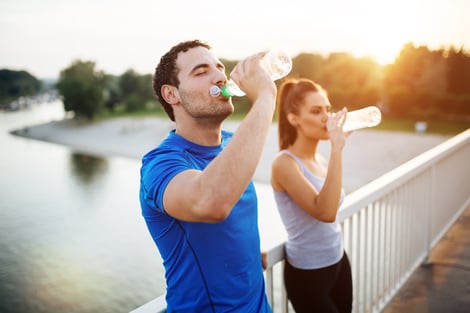 With the warmer summer months, it's the most prominent time when dehydration can become a big health issue and roadblock, especially if you are exercising outdoors. The heat and humidity can make it difficult to maintain a healthy balance of fluids in the body. That's why staying hydrated is not only important for your health but also for your fitness goals.
With the warmer summer months, it's the most prominent time when dehydration can become a big health issue and roadblock, especially if you are exercising outdoors. The heat and humidity can make it difficult to maintain a healthy balance of fluids in the body. That's why staying hydrated is not only important for your health but also for your fitness goals.